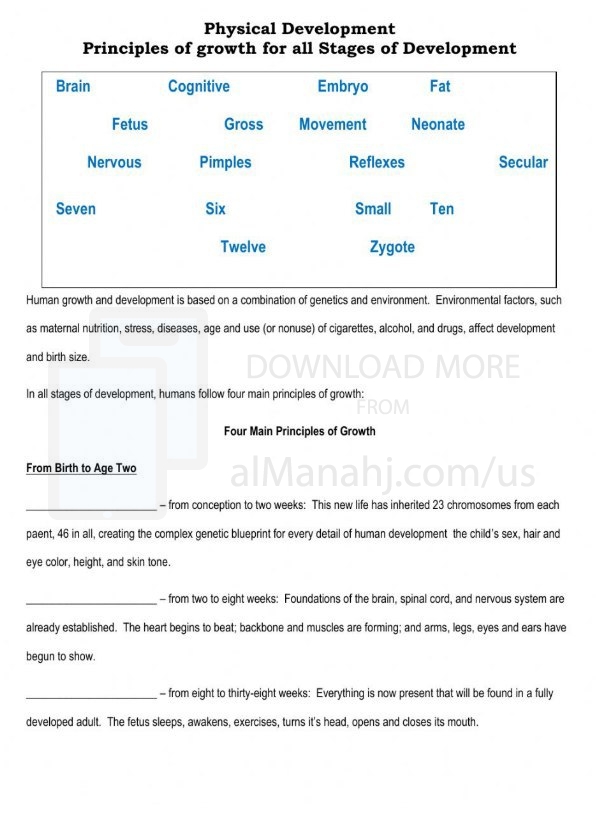| You are here: Almanahj Website ⇒ American curriculum ⇒ 8th Grade ⇒ Physics ⇒ Term 1 | ||
|---|---|---|
Worksheet about Stages of Physical Development | ||
|---|---|---|
| Subject: Physics | ||
| 8th Grade | ||
| Term 1 | ||
| Year: 2023/2024 | ||
| Size: 517.1KB | ||
| Number of clicks: 70 | ||
| Publish date:November 08, 2023 | ||
| Added by: Eman | ||
| Last download date: 2024-09-07 17:33:22 | ||
| Updated by: Eman9966 on 2023-11-08 08:34:19 | By: theodor Demetria S Rolle | |
File info: In physics, the concept of physical development typically refers to the stages of growth and changes that occur in physical systems or objects. These stages can be observed in various phenomena and systems studied in physics, such as the behavior of matter, the evolution of celestial bodies, or the progression of physical processes. Here's a general description of stages of physical development in physics:1. Initial State: The initial state represents the starting point of a physical system or phenomenon. It is the condition or configuration from which the development or evolution begins. This stage often involves a set of initial conditions or parameters that define the system's properties, such as the initial position, velocity, temperature, or energy. 2. Transition Phase: The transition phase is the stage where significant changes or transformations occur in the physical system. It involves the evolution of the system's state, often driven by underlying physical laws or principles. During this stage, observable phenomena may undergo transitions, such as changes in state of matter (e.g., solid to liquid), phase transitions (e.g., melting, boiling), or shifts in energy levels. 3. Equilibrium or Steady State: The equilibrium or steady state represents a stable or balanced condition that a physical system reaches after the transition phase. At this stage, the system's properties, such as temperature, pressure, or energy, remain relatively constant or fluctuate within specific limits. Equilibrium states are often governed by physical principles, such as the conservation of energy or the balance of forces. 4. Oscillatory Behavior: In certain physical systems, oscillatory behavior may occur. This stage involves repetitive or periodic changes in the system's properties or quantities. Examples include the oscillation of a pendulum, the vibration of a guitar string, or the periodic motion of celestial bodies. The stage of oscillatory behavior is characterized by regular patterns and can exhibit various frequencies, amplitudes, or phases. 5. Decay or Dissipation: In some physical systems, the development may involve a decay or dissipation phase. This stage represents a gradual decrease or dissipation of certain properties or quantities over time. Examples include the decay of radioactive isotopes, the dissipation of energy in mechanical systems due to friction, or the decrease in amplitude of oscillatory motion. Decay or dissipation stages often involve the conversion of energy from one form to another or the loss of energy from the system. It's important to note that the specific stages of physical development in physics can vary depending on the phenomenon or system being studied. The above description provides a general framework, but the actual stages and their characteristics may differ based on the specific context and principles of physics involved. | ||
| Downloading link Worksheet about Stages of Physical Development |
|---|
|
1699432309.pdf
The file is being prepared for download
|
| File images |
|---|
 |